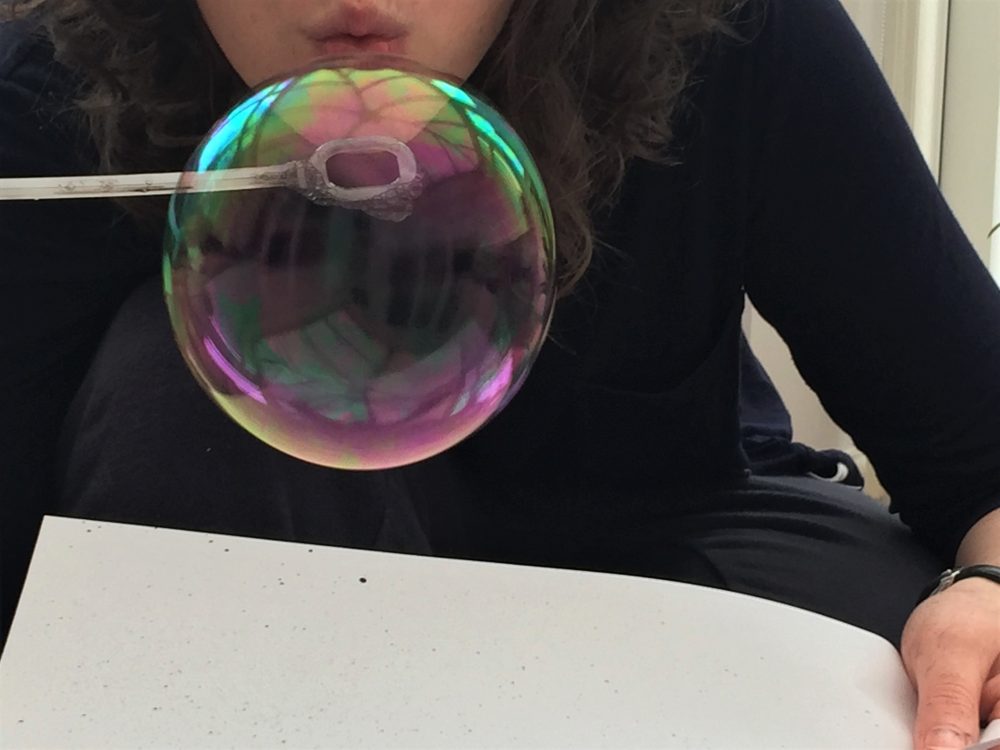Bubble Drawings
Eilis Hanson is a primary school teacher who loves to get art into the curriculum, wherever and whenever she can! She has a BA (Hons) in Fine Art from Newcastle University and studied at Universität für Angewandte Kunst in Vienna during her third year there. More recently, she has studied watercolour painting in Verona. Eilis has taught children in Indonesia, Japan and Italy and now lives and works in Cambridge. She has exhibited sculptures, prints and installations in Newcastle, Vienna and Istanbul.
In response to the National Gallery’s Take One Picture initiative, our school chose to spend a week focusing on Joseph Wright ‘of Derby’‘s dramatic painting An Experiment on a Bird in the Air Pump (1768).
After discussing and exploring the painting in assemblies, each class was set the challenge of responding through art and literacy. The Year Three children were fascinated by several aspects of the painting and many of them had questions about how an air pump works so we started to think about air and how to depict it. We began by drawing. Each child identified an item in the painting that interested them and then sketched it, considering tone, light and shadow as they worked.
To access all content, I would like to join as…
AccessArt is a UK Charity and we believe everyone has the right to be creative. AccessArt provides inspiration to help us all reach our creative potential.




Heidi B
November 6, 2019 @ 12:52 pm
I love this activity thank you so much for sharing Ellis. I note that you’ve thanked your friend Roisin Heraghty for inspiring the bubble prints. Would it be ok for me to try the same process with my group of SEN students please? Also, would you be willing/able to share anything about the process of writing the poetry, because those poems are something else! Yours hopefully and gratefully, Heidi
Eilis H
November 7, 2019 @ 6:12 pm
Hi Heidi,
I’d love it if you were to try this with your students! It gets quite messy but hopefully that’s part of the fun 🙂
The poem is based on an idea I got during some training at the National Gallery. We started the poetry process by looking at the painting closely together. The children worked in small groups to list adjectives describing what they could see (objects, people, emotions etc.). Each adjective was written on a strip of paper. We then shared ideas and the children had a chance to add any new words to their selection. Each child then chose 5 adjectives that they liked and wrote a line of poetry based on each one, again on strips of paper. When I modelled the process, I encouraged them to use different openers and sentence types. Once they had their five lines, they moved the strips around to find the best order. I then showed them how to remove superfluous words to make the poems more dramatic and they had a go at editing theirs. The last step was to add a title.
I hope that helps and that you have fun with it!
Eilis